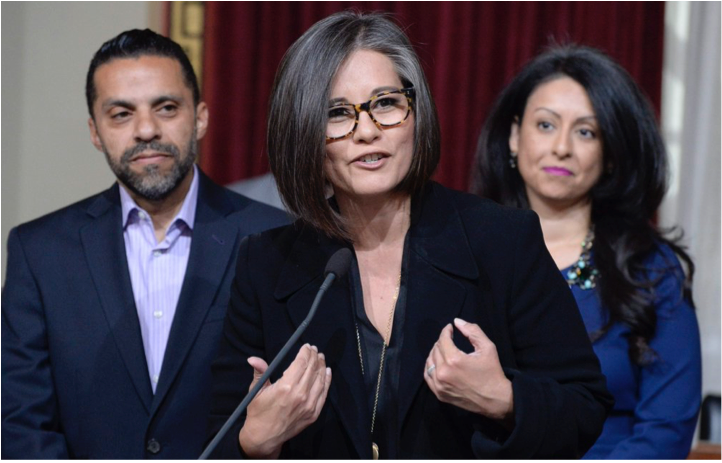CommentsTHIS IS WHAT I KNOW-The post-inaugural Women’s March in Los Angeles brought over 750,000 participants, many of whom were women. The policies of the Trump administration, coupled with a renewed sense of “can-do” has led to an increase in grassroots activism throughout Los Angeles and beyond. The Women’s March LA Foundation committed to the national organization’s 10 Actions in 100 Days. One of those actions was the formation of Huddles, groups of neighbors, friends, or colleagues gathered for postcard, e-mail, and texting campaigns, to attend town hall meetings and marches, as well as other initiatives to make their voices heard.
We might have suspected that, despite the disappointment many women felt when Trump took office that this organization and commitment to change would bring a new breed of Year of the Woman; but at some level, the progress of women in government, both in Los Angeles and on the national stage, has not followed suit.
In California, we do have two female senators, following Kamala Harris’s election to the Boxer seat. However, despite Los Angeles’s status as a fairly progressive city, when Monica Rodriguez (photo above-center) edged Karo Torossian for the Council District 7 seat, capturing 52,9 percent of the vote, she became ONLY the second female member of Los Angeles City Council, joining Nury Martinez who represents the East Valley. Women and girls make up 51 percent of the city’s population but are underrepresented in the City Council.
The underrepresentation of women office holders often results in policy repercussions. Certainly, male candidates may support legislation supporting women and families -- and characterizing such issues as “women’s issues” does us no favors. We are all impacted by policies that do not support families or women’s health issues. However, female office holders may present an additional focus on these issues. For example, Nury Martinez has committed herself to fighting human trafficking, establishing, along with LAPD Operations-Valley Bureau Deputy Chief Bob Green, the bureau’s Human Trafficking Task Force, for which she secured $1 million to fund through this year.
The current status of female representation on the Los Angeles City Council is mirrored at the federal level where women were noticeably absent from Trump appointments, with the exception of Elaine Chao (Department of Transportation) and Betsy DeVos (Department of Education.) Women were also noticeably absent from the Senate Committee on Healthcare. The GOP’s initial healthcare package excluded many services for women, including pregnancy coverage as an “essential benefit.”
The path to increase representation at the city, state, and national levels must include support for female candidates, both in outreach and in campaign financing/fundraising.
Groups such as She Should Run, a non-partisan project created in 2008 that has grown into a movement to inspire women to run for public office, and Emily’s List connect potential candidates with resources and organizations to forward their runs.
By supporting these organizations, we can support a more gender-balanced government at every level, which is sound policy for all of us.
(Beth Cone Kramer is a Los Angeles writer and a columnist for CityWatch.) Edited for CityWatch by Linda Abrams.
Sidebar

 CityWatch Los Angeles
Politics. Perspective. Participation.
CityWatch Los Angeles
Politics. Perspective. Participation.
03
Fri, Jan















